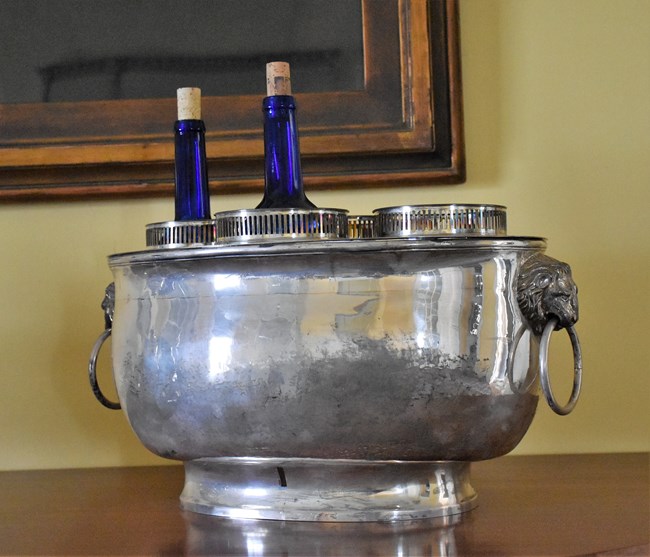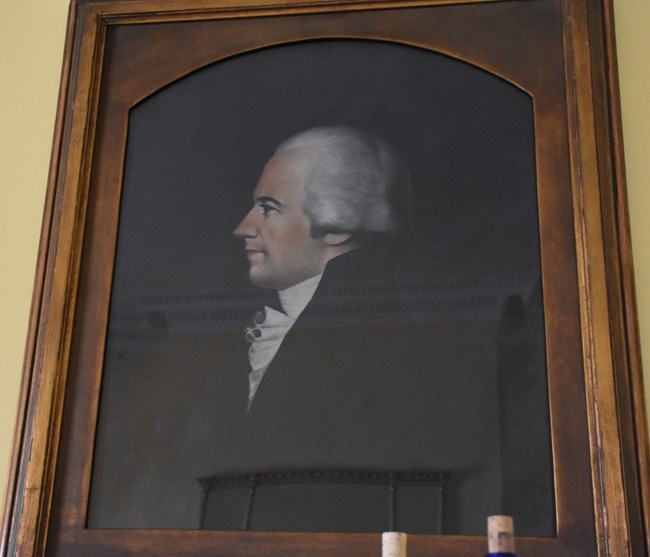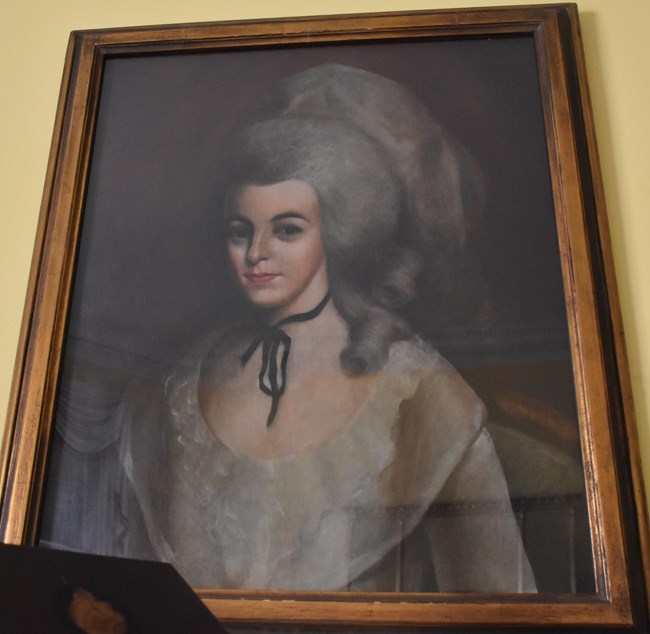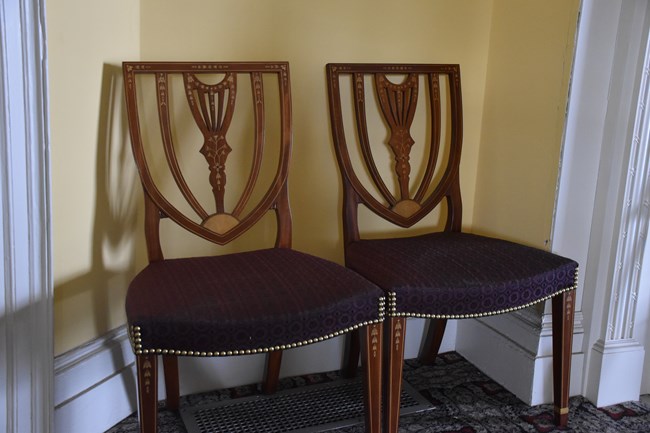Last updated: July 28, 2023
Article
Hamilton Grange Dining Room Collection

NPS photo
Wine Cooler
This replica Sheffield silver wine cooler is an icon for the relationship between George Washington and Alexander Hamilton, and their monumental task of building a new nation.
The first reference to this wine cooler appears in a 1797 letter from George Washington to Governeur Morris. Morris, was on business in Europe at the time.
“Of plated ware may be made I conceive handsome and useful Coolers for wine at and after dinner,” Washington wrote to Morris. His instructions were detailed: he wanted twelve wine coolers, eight would be double wine coolers, for two pint wine decanters each, and four would be quadruple wine coolers, for four quart wine decanters each. Washington wanted the wine bottles to stand upright, with ice at the bottom of the cooler. With an emphasis on frugality, he warned Morris, “One idea however I must impress you with and that is in whole or part to avoid extravagance,” and added, “extravagance would not comport with my own inclination, nor with the example which ought to be set...”
The wine coolers ordered were made with Sheffield silver, named after the city in England where the technology was manufactured beginning in the mid-18th century. Sheffield silver, as opposed to classic silver, was a material created from the fusion of copper and silver. An interior layer of copper was covered by a plate of silver fused together. This method resulted in attractive items that looked and functioned as silver ware would, at a much cheaper price.
However, the items were evidently not as cheap as Washington had intended. In a letter to his personal secretary Tobias Lear, Washington expressed concerns for the objects’ prices. “The prices of the plated ware exceeds—far exceeds the utmost bounds of my calculation”. However, Washington agreed to accept the purchase. They were purchased by Washington with his own funds.
Upon leaving office, Washington gave three of the double coolers to former members of his administration, and in August of 1789, he presented a quadruple cooler to Alexander Hamilton.
“Not for any intrinsic value the thing possesses, but as a token of my sincere regard and friendship for you, and as a remembrancer of me; I pray you to accept a Wine cooler for four bottles,” He wrote, “I pray you to present my best wishes, in which Mrs. Washington joins me, to Mrs. Hamilton & the family; and that you would be persuaded, that with every sentiment of the highest regard, I remain your sincere friend.”
It is noteworthy that this gift is given to Hamilton during a time of high turbulence in his personal and political career. The Reynolds Pamphlet, a defense of Hamilton’s governmental spending and consequential expose of an extramarital affair, was in the process of being printed for mass publication.
Less than two years later, George Washington passed away. Hamilton wrote, “I have been much indebted to the kindness of the General, and he was an Aegis very essential to me.”
The Hamilton family kept the wine cooler for many years. In 2012, it was put for auction. It is now owned by a private, unknown buyer.

NPS Photo
Alexander Hamilton Portrait
Title: Alexander HamiltonArtist: Giovanni Chironna after James Sharples
Oil on canvas with aqueous medium.
Profile of Alexander Hamilton, facing to the viewer's left. He is depicted wearing a dark jacket and a white ruffled shirtfront. The painting is a slightly altered copy of Sharples circa 1796 painting: Chironna has depicted a greater length of the subject's upper body. Signed at lower left, signature now concealed by the frame. At upper right on reverse in black is "Alexander Hamilton". The painting was executed as part of the same Civil Works Administration project as the painting of Mrs. Hamilton (cataloged as HAGR 148).The painting is currently in a gold colored wooden frame with Plexiglas cover. The window of the frame includes an arched top that hides the corners of the painting.The artist signed the painting as indicated above, but in a 1984 letter to the curator of Federal Hall National Memorial, signed himself as "John Chironna"

NPS Photo
Elizabeth Hamilton Portrait
Title: Mrs. Alexander HamiltonArtist: O.W. Adams, after Ralph Earle
Oil on canvas portrait Elizabeth Schuyler Hamilton.
She is depicted seated in a chair, turned slightly to her right, against a reddish background. She wears a low cut white gown, her hair is covered by a thin white veil. A dark ribbon is tied about her neck. Signed at lower left "O.W. Adams, after Earle". Adams has reversed the position of the subject as depicted in the original, and reduced the surrounding space. The painting is believed to have been created as a Civil Works Administration project.Currently in a gold colored wooden frame.

NPS Photo
